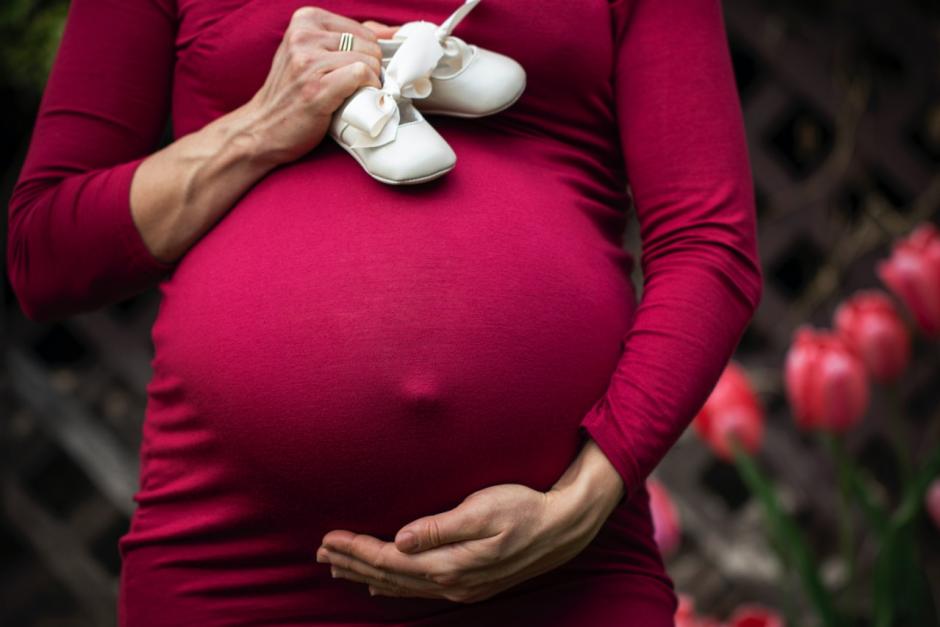A high bump for a boy, a low bump for a girl. That’s what everyone says, right. But is it really true? And what does a high bump or low bump actually mean? Let’s find out.
What is a high pregnancy bump?
A high bump is when the pregnancy bulge in your belly is higher-up, sitting closer to your chest than your lower stomach. Sometimes it can even be right up against your breasts. With a high bump, your bellybutton is likely to be in the centre of your bulge.
What is a low pregnancy bump?
A low pregnancy bump is when your baby bulge lies lower and closer to your pelvis. It begins around your lower stomach. With a low bump, your bellybutton is likely to sit higher than the centre of your bulge.
So, can you tell the sex by the position of the bump?
It’s a common saying that a high pregnancy bump means you’re going to have a boy and a low pregnancy bump equals a girl. So common in fact that as a mother-to-be starts to show, friends, family members and colleagues (even strangers on public transport) will often comment on the size and shape of the bump and make confident predictions on what it all means.
But is it true?
Put simply, no. The gender of an unborn baby has no effect on the size and shape of a mother’s pregnancy bump. They aren’t related.
This pregnancy myth is one amongst many that attempts to predict the sex of a baby – from the size of your belly to the types of cravings you have and whether or not you have morning sickness. None of this has been shown by scientific research to be reliable predictors of your baby’s sex.
But can you tell anything from the height of your pregnancy bump? Sometimes you can. We’ll explain.
What does a high bump mean in pregnancy?
A high pregnancy bump can mean a few things:
You’re at the beginning of your pregnancy: Your bump is likely to be higher in the earlier stages of pregnancy. As your pregnancy progresses and your belly grows, gravity gets involved and your bump can descend.
It’s your first pregnancy: Usually, a woman’s bump sits higher during their first pregnancy.
You’re on the shorter side: Generally, shorter women have higher bumps, as there’s less room in your body for a growing baby.
You have tighter abdominal muscles: Typically, the stronger a woman’s abdominal muscles, the higher the bump will sit.
Your placenta has settled high: This is when the placenta and the umbilical cord are further up in your body, causing your bump to sit higher. This isn’t anything to worry about as your placenta can attach to almost any part of your uterus. In most cases, this won’t affect your pregnancy.
Your baby is lying sideways: If your baby is lying sideways inside you, it can make your belly bulge sit higher and look wider.
What does a low bump mean in pregnancy?
A low pregnancy bump can mean:
You’re reaching the end of your pregnancy: Your bump will most likely fall through time as your baby grows and gravity does its work. Your baby often drops before labour too, further lowering your bulge. This can happen weeks, days or hours before you go into labour.
This isn’t your first pregnancy: Often your bump will sit lower if you’ve carried a baby before.
You’re tall: Typically, taller women, especially tall women with wide hips, carry their babies lower down during pregnancy.
You have weaker abdominal muscles: Generally, the weaker a woman’s abdominal muscles are, the lower the bump will sit although this isn’t always the case.
Your placenta has settled high: Your placenta can attach lower down to your uterus, causing your baby to settle lower down in your body. This won’t affect your pregnancy, and the position of your placenta is something that will be checked and assessed during your 18- to 21-week ultrasound scan.
When does a bump drop in pregnancy?
Pregnancy bumps usually fall lower during pregnancy as your baby and your bump grows. How much your bump falls will depend on the shape of your body, the strength of your stomach muscles, the size of your baby and whether or not you’ve been pregnant before.
Your pregnancy bump will also likely fall noticeably lower towards the later stages of your pregnancy. This happens when your body is preparing to deliver and when your baby’s getting ready to arrive. This typically happens around four to two weeks before delivery, but the timing can vary. It can even happen hours before labour.
Will the height of my pregnancy bump affect my labour?
There’s another pregnancy myth that states the lower your bump the easier the labour and the higher the bump the more difficult your labour will be. Again, this isn’t true. Rest assured that the height of your bump isn’t related at all to your labour.
Every bump is unique
Many mothers-to-be worry about the size and shape of their bump and what they can read into it. But the truth is, it doesn’t mean all that much. Every bump is unique and the size and shape of it can depend on a wide range of things, from your body shape to the position of your placenta.
Whilst the height of your pregnancy bump is generally irrelevant, if you do have any concerns about labour or about the height and shape of your bump, don’t stay quiet. Talk to your doctor and your midwife and ask them as many questions as you need to. This is the time in your life to voice your concerns and to try and find as much peace of mind as possible. And remember, high bump or low bump, boy or girl, as long as your baby has a cosy nursery, a safe car seat, a good pushchair and lots of love, they’ll be off to a great start.
Sources:
https://www.thebump.com/a/what-pregnancy-bump-shape-means
https://joyoflifesurrogacy.com/blog-post/why-is-my-baby-bump-so-high
https://health.howstuffworks.com/pregnancy-and-parenting/pregnancy/issues/carrying-boy-or-girl1.htm
https://www.todaysparent.com/pregnancy/9-old-wives-tales-for-predicting-gender/
https://www.whattoexpect.com/pregnancy/ask-heidi/when-baby-drops.aspx



Leave a Comment: